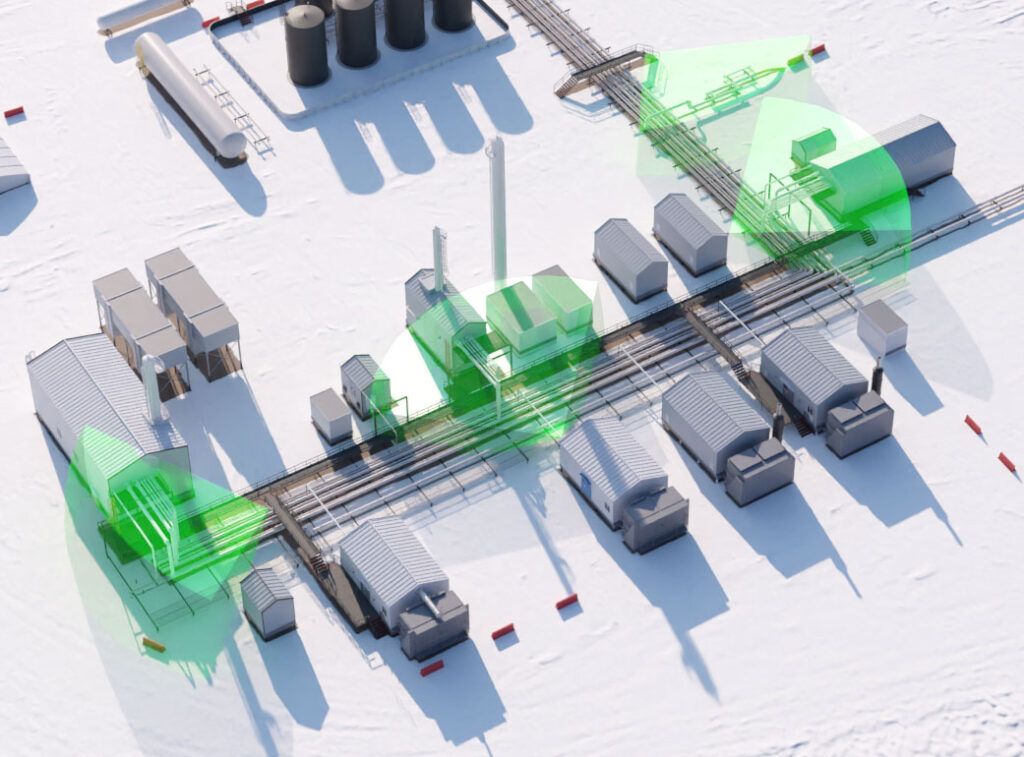In the battle against climate change, methane stands out as a formidable opponent. As a potent greenhouse gas, it traps 84 times more heat over a 20-year period compared to carbon dioxide. Addressing methane emissions, therefore, is a priority in the global environmental agenda. Enter continuous methane measurement systems, the silent guardians that are transforming the way we monitor and mitigate methane emissions. These advanced emissions monitoring equipment offer real-time gas analysis, enabling a proactive approach to environmental conservation.
The Mechanics of Continuous Methane Measurement Systems
At the heart of these systems lie intricate networks of industrial environmental sensors that can detect and quantify methane levels continuously. Unlike traditional methods that rely on periodic measurements, these sensors provide a continuous stream of data, ensuring that even transient emissions are captured. This real-time gas analysis capability is crucial for understanding the fluctuating dynamics of methane emissions across various sectors, including agriculture, waste management and the fossil fuel industry.
What are continuous methane measurement systems, and how do they work in monitoring methane emissions?
Continuous methane measurement systems are sophisticated technologies designed to offer uninterrupted monitoring of methane emissions. These systems employ advanced sensor technologies, such as laser spectroscopy and infrared sensors, to detect methane concentrations with high precision. Unlike conventional methods that may only provide sporadic or snapshot data, continuous systems deliver a constant flow of information, allowing for the identification of even the smallest emission events.

The operation of these systems is based on real-time data acquisition and analysis. For instance, laser-based sensors emit a laser beam that is absorbed by methane in the atmosphere and the degree of absorption is used to calculate the concentration of methane. This data can be transmitted wirelessly to central monitoring systems for analysis, often using cloud computing for real-time processing and reporting. This allows facilities to quickly detect leaks and employ corrective measures, minimizing environmental impact and enhancing safety protocols.
Why is continuous monitoring of methane important for environmental surveillance and climate change mitigation?
The continuous monitoring of methane is crucial for several reasons, primarily due to its significant impact on climate change. Methane is over 25 times more effective than carbon dioxide at trapping heat in the atmosphere over a 100-year period, making it a critical target for greenhouse gas reduction initiatives. By enabling continuous monitoring, organizations can better understand emission patterns and sources, crucial for developing effective mitigation strategies.
Moreover, continuous methane monitoring supports regulatory compliance and enhances transparency. With stringent international agreements like the Paris Accord aiming to curtail greenhouse gas emissions, having robust data from continuous monitoring systems allows industries to demonstrate compliance with regulatory standards. This transparency not only helps industries maintain their social license to operate but also builds public trust and investor confidence.
Deployment in Diverse Environments
These systems are not a one-size-fits-all solution. They are versatile and adaptable, deployed across diverse environments ranging from remote agricultural fields to bustling urban centers. For instance, in agriculture, continuous methane measurement systems help monitor emissions from livestock, providing insights that can lead to more sustainable farming practices. In urban areas, they track emissions from landfills and wastewater treatment plants, essential for maintaining air quality and public health.
The integration of these systems into existing infrastructure is often seamless, with flexible deployment options that include stationary, mobile and drone-based platforms. This flexibility ensures that monitoring can be tailored to the specific needs and challenges of each environment, making it easier to identify and address areas of concern.
The Role of Real-Time Data in Environmental Surveillance
The capacity of continuous methane measurement systems to deliver real-time data is transformative. Organizations can now detect leaks and irregularities as they happen, rather than retrospectively identifying them long after they’ve impacted the environment. This immediacy enables swift corrective action, minimizing potential damage. For industries like oil and gas, where methane leaks can occur rapidly, such systems are invaluable in maintaining safe operations and demonstrating a commitment to environmental responsibility.
Implications for Climate Change Mitigation
By providing accurate and continuous data, these systems help inform more effective climate change mitigation strategies. Policymakers and environmental agencies can rely on precise methane data to craft regulations and initiatives that better address emission sources. This data-driven approach ensures that interventions are targeted and effective, maximizing their impact on reducing greenhouse gas emissions.
Additionally, continuous methane measurement systems play a critical role in increasing transparency and accountability. Companies that invest in this technology can demonstrate their commitment to sustainability, enhancing their reputation and building trust with consumers and stakeholders.
Challenges and Future Prospects
Despite their benefits, the deployment of continuous methane measurement systems is not without challenges. Initial costs can be prohibitive, and there is a need for skilled personnel to operate and maintain these sophisticated systems. However, advancements in technology are driving down costs and increasing accessibility, paving the way for wider adoption.
Looking to the future, the integration of artificial intelligence and machine learning with methane measurement systems promises even greater capabilities. These technologies can analyze vast data sets to predict emission trends and offer insights that were previously unattainable. As we continue to innovate, the potential for these systems to contribute to global sustainability goals is limitless.
Conclusion
In summary, continuous methane measurement systems are revolutionizing environmental surveillance by providing precise, real-time data crucial for effective emissions monitoring. As these silent guardians continue to evolve, they offer a beacon of hope in our mission to mitigate climate change impacts. Embracing this technology is not just an option but a necessity for safeguarding our planet’s future.
“`
